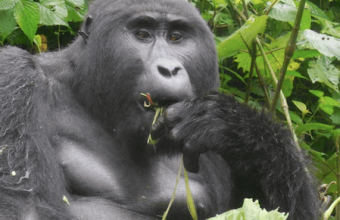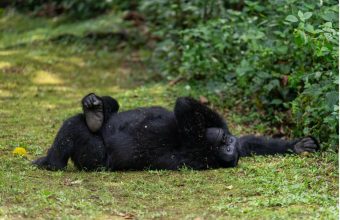What To Do After A Gorilla Trek
Uganda
Uganda is a haven for primate lovers. You can track golden monkeys in Mgahinga and chimpanzees in Kibale, Budongo and Kyambura Gorge.
Most visitors to Uganda combine gorilla trekking with a safari. Queen Elizabeth and Murchison Falls are the country’s two most popular national parks, offering fabulous boat ride safaris, on which you can see hippos, Nile crocodiles, buffalo, elephants and birds, with Queen Elizabeth home to over 600 bird species, more than any other national park in Africa. Kidepo Valley National Park in the far northeast of the country is an up-and-coming safari destination.
Uganda has much to offer those who like a physical challenge. Visitors can hike the volcanoes of south-west Uganda, canoe the lakes of Lake Mutanda and Lake Bunyonyi, hike Mount Elgon in the east and climb the Rwenzoris (the fabled Mountains of the Moon). Thrill-seekers can take part in a wide range of high-adrenaline activities such as quad biking, horse riding, grade 5 white water rafting and kayaking on the River Nile at Jinja. This town sits on Lake Victoria and is known as the source of the Nile.
Uganda’s capital Kampala is a popular city that is popular across the region for its buzzing nightlife. It has an interesting variety of arts events, music festivals and live music.
Uganda is a country of over 50 tribes and cultural interactions are becoming increasingly prominent. Many lodges will include a cultural dance performance, but beware the orphan shows. Well-intentioned communities sometimes push young children into the limelight to fundraise. Uganda Community Tourism Association (UCOTA) promotes some of the country’s best cultural experiences that include traditional cookery, music, beekeeping and farming demonstrations.
English is widely spoken in Uganda meaning self drive trips are an option. Ugandans love life and are very welcoming.
Rwanda
Rwanda has a growing range of wildlife and safari activities, including Akagera National Park (a Big Five destination) and Nyungwe Forest National Park.
Rwanda has made serious investments in tourism over the last few years. It's an easy country to move around with good roads. English has replaced French as the lingua franca and the services of a local guide are recommended for visiting most parts of the country. There are four national parks, the latest being Gishwati-Mukura.
Akagera National Park may be small but has enough wildlife to warrant a visit. Over the last few years, white rhinos and lions have been reintroduced and the lions are breeding successfully. Visitors may also spot leopards, elephants, numerous species of antelope and a healthy population of grey-crowned cranes. Rwanda is committed to conservation at the highest levels of government.
Nyungwe is in the far south-west of Rwanda and is arguably worth the trip for the canopy trail alone. This metal walkway stands 70m above the forest floor and the views are without equal. Look around and you are surrounded 360° by mature indigenous rainforest. There is no sign of human activity for as far as the eye can see. Nyungwe is also famous for its birdlife, waterfalls, chimp tracking and population of black and white Colobus monkeys.
To the north of Nyungwe lies Lake Kivu, Rwanda’s seaside and the popular town of Gisenyi, a small laid-back place with a popular public beach and a view of the Congo across the lake. Adjacent is the Congolese town of Goma whose sky occasionally glows red due to the volcanic lava of Mount Nyiragongo.
Rwanda’s capital Kigali would look comfortable in Europe. The city's excellent roads, streetlights and traffic regulations make it the envy of many other African nations. It's a well-organised city with a growing range of international hotels and top conference venues. It has interesting cafés and art galleries. A visit to the world-class Genocide Memorial Museum may be painful yet is highly recommended after you have visited the gorillas. This history may go some way in explaining the more reserved nature of Rwandans.
















